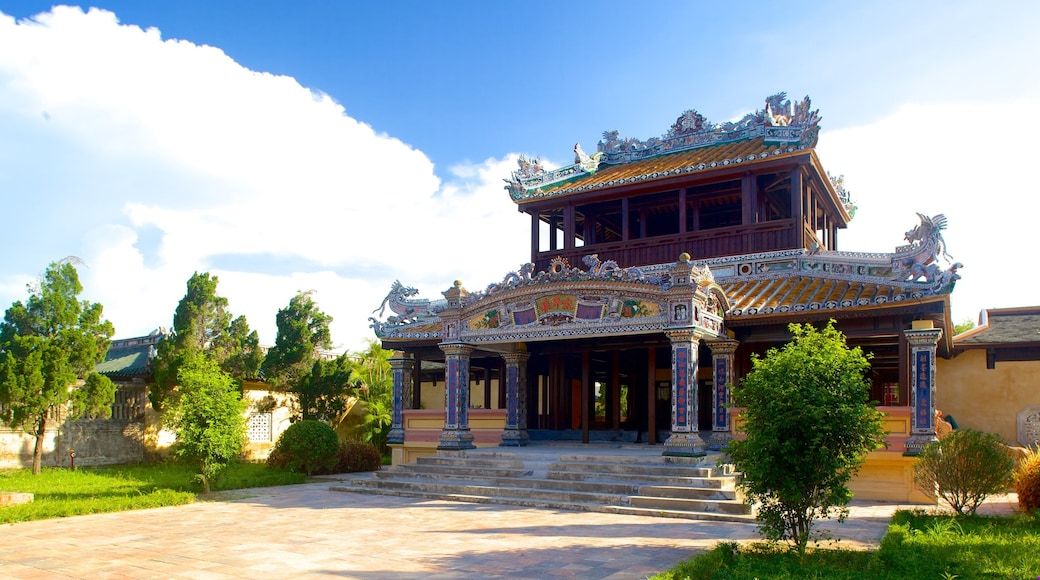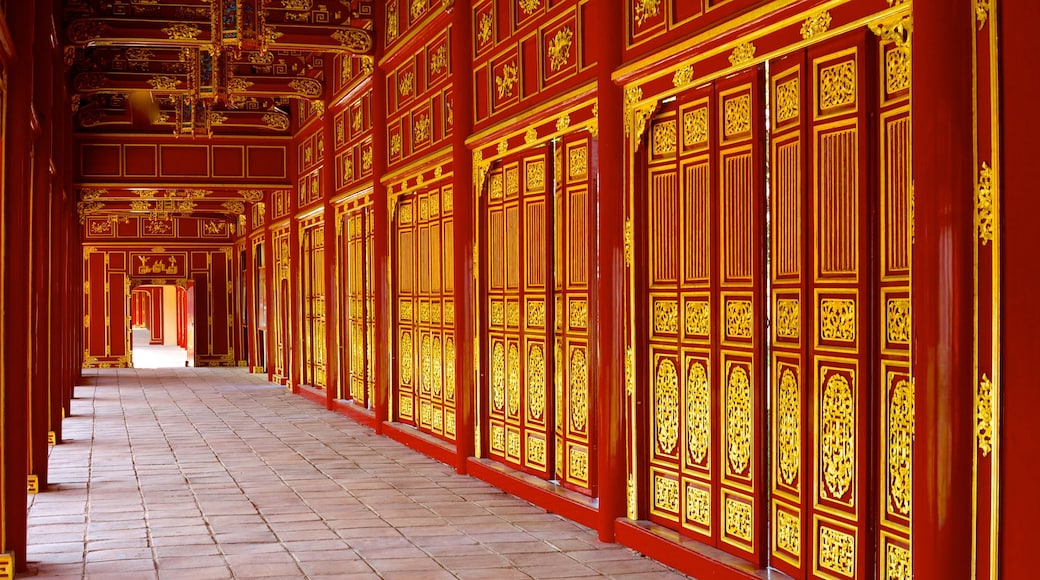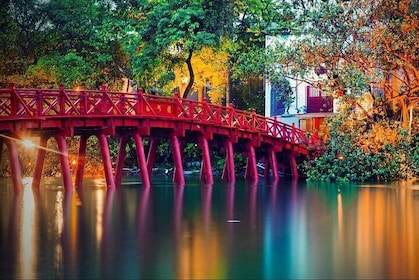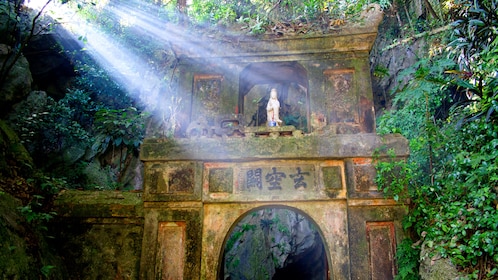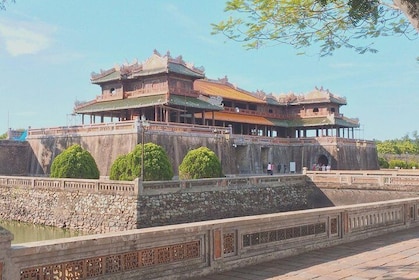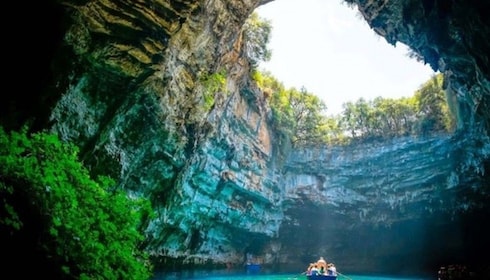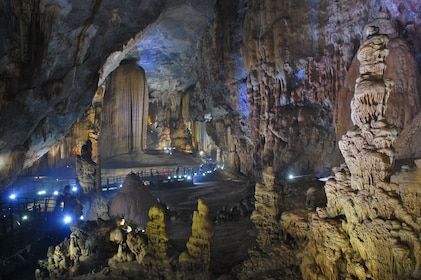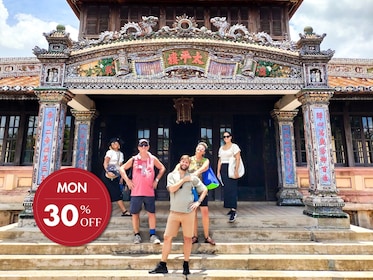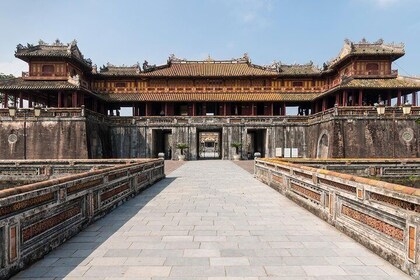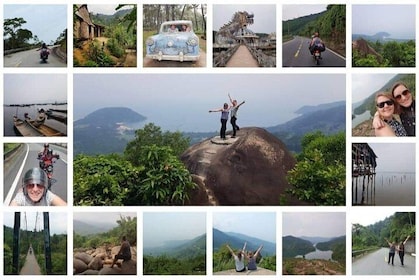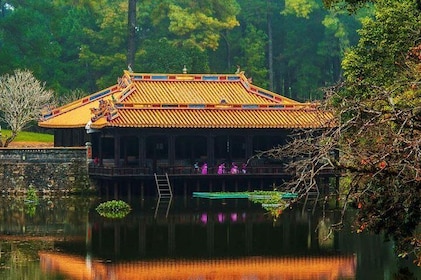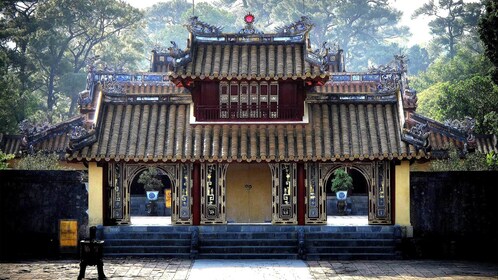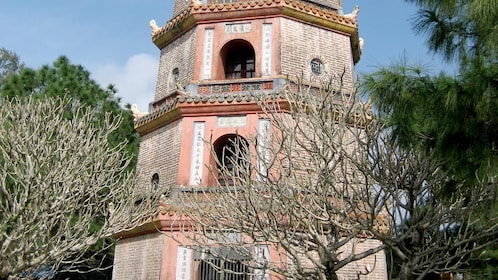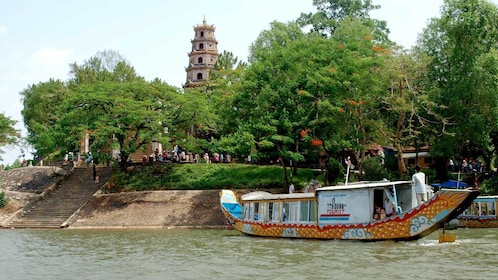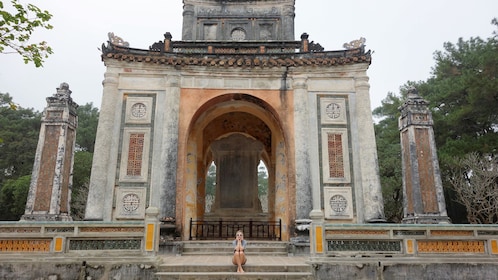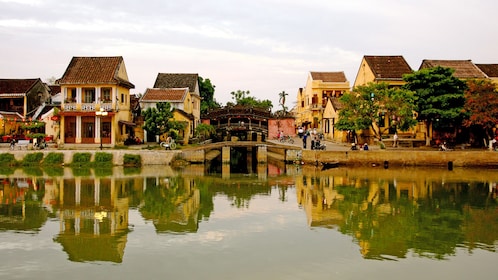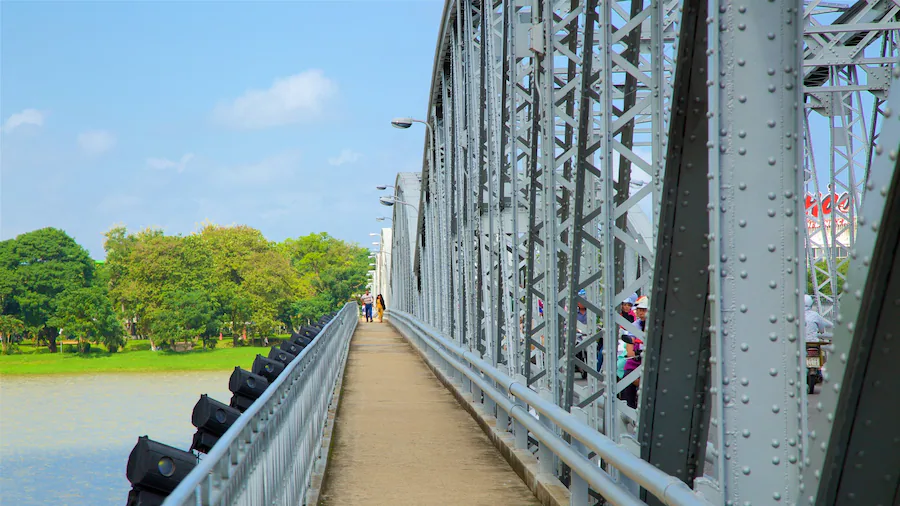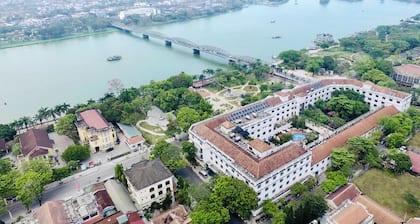Walk past the stunning temples and palaces enclosed in the walled area of the Imperial City. Discover the history of destruction in this famous citadel and admire the fine architecture that has escaped damage from the country’s wars.
Construction began on Hue’s famous Imperial City in 1804. Although it is no longer the seat of government, be sure to visit, because it remains one of Vietnam’s important cultural centers.
Enter the district through the impressive Ngo Mon Gate, designed to strike fear into the hearts of visiting dignitaries. The gate has also played an important part in Vietnam’s history. Emperor Bao Dai abdicated here in 1945, bringing an end to the Nguyen Dynasty.
Continue across the pretty lotus pond to the Thai Hoa Palace. Admire the ornate wooden roof, supported by 80 red marble columns. At the back of the palace, view the emperor’s throne on its elevated platform. Stop to watch the audio-visual presentation providing an interesting overview of the citadel from its creation to its partial destruction in the French and American wars.
Move to the Halls of the Mandarins directly behind the palace. Marvel at the exquisite golden Buddha and have a photo taken dressed in the clothes of Vietnamese royalty.
On the left is one of the only remaining temples in the Imperial City. Thế Mieu Temple is coated almost entirely in red and holds shrines to each of the ruling emperors. Notice tables lined with gold, holding pictures of the emperors.
Head to the triple-terraced Flag Tower on the wall overlooking the river. Stroll along the ramparts to find the nine sacred cannons. Each weighs about 11 tons (10 metric tons). Together they represent the four seasons and the five elements.
You can easily spend several hours exploring the Imperial City. If you get hungry during your visit, stop at the food stalls where you can buy tasty local snacks.
The Imperial City, in the heart of Hue, is open daily. An admission fee is charged.
